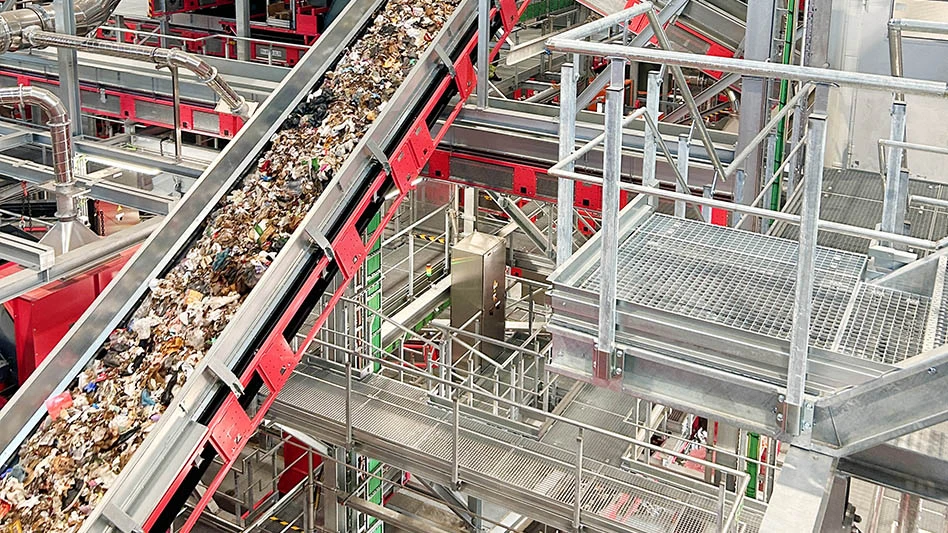
Photo courtesy of Sniffer Robotics LLC
Sniffer Robotics LLC, Ann Arbor, Michigan, has announced that the Environmental Protection Agency (EPA) has accepted its proposal to permit unmanned aerial systems (UAS) or drones to conduct surface emissions monitoring (SEM) at municipal solid waste landfills, publishing OTM-051-UAS Application of Method 21 for Surface Emissions Monitoring.
This method using the SnifferDRONE provides a comprehensive, effective, safe and consistent means of identifying methane leaks over landfills, the company says.
Along with the OTM, Steffan Johnson, a leader of the EPA’s Measurement Technology Group, sent Sniffer Robotics a letter approving the OTM-51 method for compliance.
“Based on a thorough review of the subject federal landfill subparts and your submittal, including the supporting data along with a detailed methodology for your proposed UAS-based alternative for conducting SEM, we conclude that [the] UAS-based alternative method yields results that are typically no less stringent and often more conservative when compared to those of the existing SEM compliance procedures and is thus adequate to determine compliance with the operational limit,” Johnson writes in the letter.
The EPA approval allows the SnifferDRONE to be used as a tool to pre-screen for emissions for quarterly compliance purposes. The adoption of the OTM-51 method standardizes methodology and reporting, driving better consistency in performance.
Flying at ground level
SnifferDRONE collects air samples within 10 centimeters of the ground, according to Johnson’s letter. It measures the methane concentration in parts per million (ppm) and correlates the measurements to discrete latitude/longitude coordinates during flight. This data is then transformed to provide specific leak locations consistent with EPA regulations as actionable information. The data also can be used to estimate fugitive gas emissions and presented on a temporal basis to understand gas migration on the site in conjunction with operational changes.
Since 2019, the SnifferDRONE has been tested and used in operations by waste companies for assessing emissions at select sites. The technology provided new insights to improve landfill gas collection and improve overall operation and maintenance efforts. To date, the system has been deployed in 28 states at more than 150 landfills, leading to the identification of more than 16,500 leak sources.
Finding more leaks also proved useful in helping landfill operators reduce odor sources. Though methane is odorless, leak sources may also emit odorous gases. Since the SnifferDRONE identifies more leak sources than traditional SEM methods, landfill operators have used the SnifferDRONE to better address odor sources.
RELATED: Harnessing the power of waste | Reclaiming energy from methane at Maryland landfill
The gas landscape
Landfill gas is a byproduct of waste decomposition. Generally, landfill gas is composed of 50 percent methane and 50 percent carbon dioxide with trace amounts of odorous gases such as hydrogen sulfide (H2S) and other volatile organic compounds (VOCs).
The waste industry installs gas collection systems to capture landfill gas since most of it can be cleaned and converted to electricity through landfill gas-to-energy projects or processed into renewable natural gas (RNG). The industry also installs cover systems comprising soil, vegetative cover or geosynthetic membranes, to prevent gas from emitting.
Despite landfill operators’ best efforts to capture the landfill gas and prevent emissions through landfill covers, a portion is emitted into the atmosphere. Emissions are generally attributed to insufficient gas collection, poor cover or lack of maintenance, but they also can be increased by weather and environmental conditions. According to the US EPA, more than 85 million metric tons of methane was emitted from the waste industry in the United States in 2021.
Methane receives most of the attention due to its harm to our environment. It is widely known that methane causes 80 times more global warming over a 20-year period than carbon dioxide and is responsible for approximately 30 percent of the rise in global temperatures since the Industrial Revolution.Get curated news on YOUR industry.
Enter your email to receive our newsletters.
Latest from Waste Today
- US Senate backs reduced cuts to EPA
- ELV Select Equipment, Reworld aid NYPD in secure firearm disposal
- Waste Connections announces Q2 results
- Returnity and Cosmoprof to address reusable bag waste
- SWANA releases report on aging WTE facilities
- New economic assessment reveals cost benefits of California’s SB 54
- Premier Truck Sales & Rental opens new facility
- TeknTrash Robotics, Sharp Group partner on humanoid robot pilot






